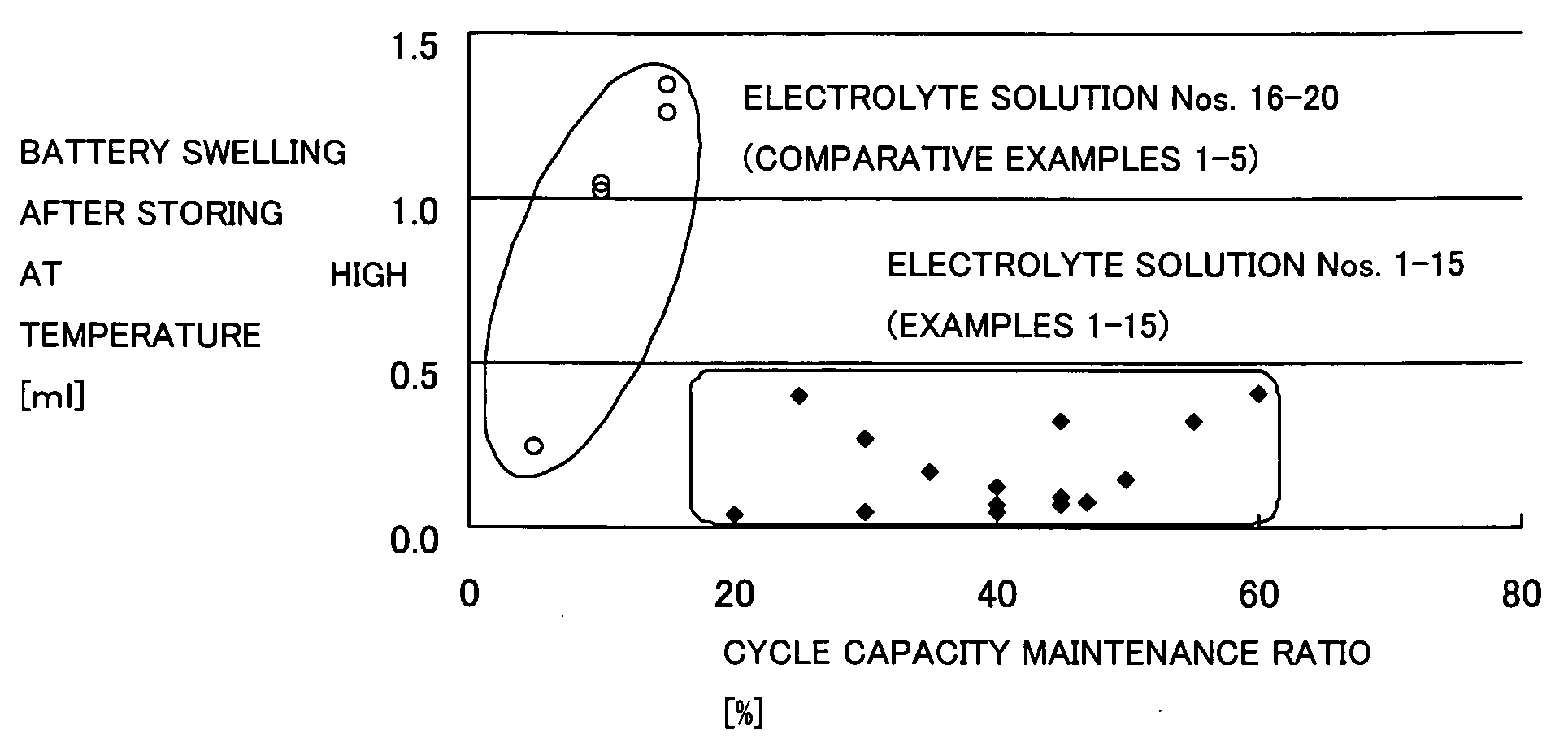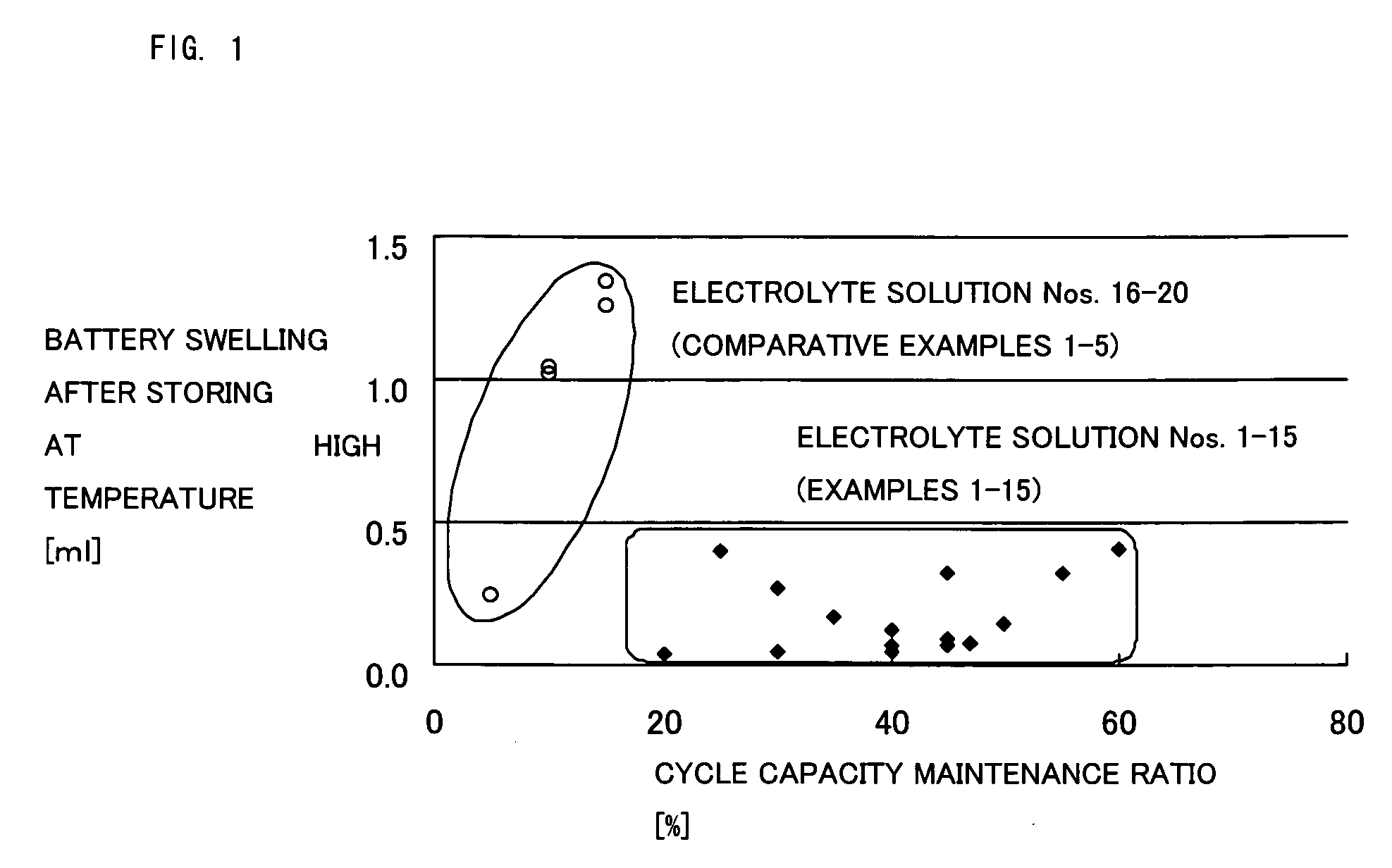Nonaqueous Electrolyte and Lithium ion Secondary Battery Using Same
a technology of lithium ion secondary batteries and nonaqueous electrolyte, which is applied in the direction of non-aqueous electrolyte cells, cell components, electrochemical generators, etc., can solve the problems of no attempt to restrain gas generation, the capacity restraint effect of lithium ion batteries cannot be obtained, etc., to improve the charge/discharge cycle characteristic, increase the capacity of batteries, and restrain the swelling of the battery when the battery is no
- Summary
- Abstract
- Description
- Claims
- Application Information
AI Technical Summary
Benefits of technology
Problems solved by technology
Method used
Image
Examples
example 1
[0067]A cycle test and a battery swelling test as described below were conducted using the nonaqueous electrolyte solution No. 1 shown in Table 1. The results are shown in Table 2.
[0068]1. Cycle Test
[0069]A coin-shaped battery was prepared in accordance with a process described below, and then the discharge capacity at the first cycle and the discharge capacity maintenance ratio (%) at the 20th cycle were measured.
[0070](1) Formation of an Al Negative Electrode
[0071]An aluminum foil of 20 μm in thickness was punched out into a coin shape of 14 mm in diameter, and vacuum-dried at 100° C. for 2 hours to obtain a coin-shaped negative electrode. In this coin-shaped negative electrode, an aluminum element serves as the negative electrode active material. When this negative electrode was charged / discharged at 1.5 to 0 V, using metal lithium as a counter electrode, the charge / discharge capacity of the lithium was 7.5 mAh.
[0072](2) Formation of a Positive Electrode
[0073]82 parts of LiCoO2 (...
example 2
[0100]The cycle characteristic test and battery swelling test were conducted in the same way as in Example 1, except that the nonaqueous electrolyte solution was changed to the nonaqueous electrolyte solution No. 2 described in Table 1. The results are shown in Table 2.
PUM
 Login to View More
Login to View More Abstract
Description
Claims
Application Information
 Login to View More
Login to View More - R&D
- Intellectual Property
- Life Sciences
- Materials
- Tech Scout
- Unparalleled Data Quality
- Higher Quality Content
- 60% Fewer Hallucinations
Browse by: Latest US Patents, China's latest patents, Technical Efficacy Thesaurus, Application Domain, Technology Topic, Popular Technical Reports.
© 2025 PatSnap. All rights reserved.Legal|Privacy policy|Modern Slavery Act Transparency Statement|Sitemap|About US| Contact US: help@patsnap.com



